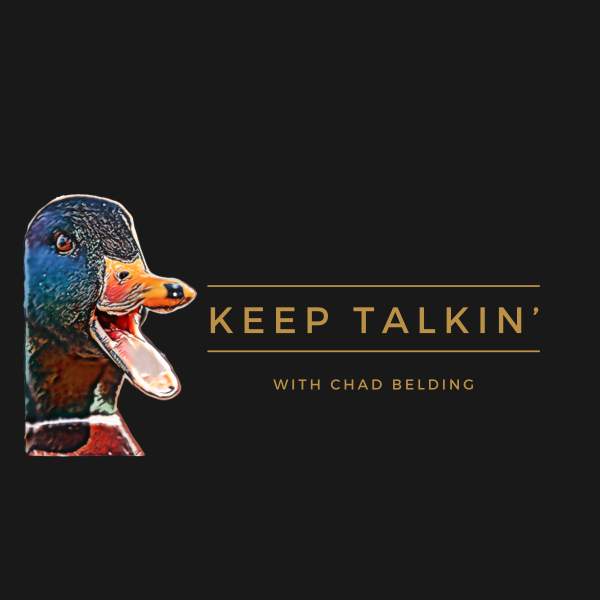
Early goose season in Wisconsin is almost here, and we sat down with our good friend and TFL Midwest host Joel Kleefisch to break down the art of foolin’ some early-season honkers.
There’s something sacred about chasing local geese across cut fields with folks who get it. It’s not flashy. It’s not fast. It’s just good, old-fashioned field time, and it all starts with the birds that never left. The ones that walk like they own the place. Because, well... they kind of do.
Joel gave us his straight-shooting take on what matters most, and we took notes—so you don’t have to.
Crops: The Ground Truth
Joel says, “Crop rotation dictates early goose success.”
That’s the bottom line. “Wheat is the first to come off, and most of your early hunts are for local geese—the longnecks that stick around all year.”
The play is to find open water that holds birds near wheat. That’s the pattern. That’s your shot.
This isn’t guesswork! It's knowing how the land works. Where there’s wheat and water, there will be geese.
Scouting: Timing Is Everything
We’ve said it once, and we’ll say it again: timing is everything.
“Scouting for early season is more about finding and getting permissions on wheat and hay fields than it is about migratory patterns.”
You’re not chasing flights from the north, you’re betting on when and where the combine rolls.
“If a field is cut too early, it can be eaten bone dry by the time you can hunt. If it’s cut the day before you hunt, the birds may not have found it yet.”
So, Joel says the sweet spot is “Usually 5–7 days before you hunt a field is ideal—unless you find an X that has lots of food and lots of birds.”
That’s the goldmine. When you find it, protect it like it’s yours.
Networking: The Hidden Superpower
Joel elaborated on how “Networking is the single most important factor in early, mid, and late season success.”
Period. You can have the best spread, the best call, and the cleanest hide, and still strike out if you’re not connected with the landowners who make it all possible.
“Building relationships with the farmers who give you the privilege of hunting their land is paramount. Do not show up days before you want to hunt. It is never too early to ask.”
Want to kill more geese? Earn trust. Build familiarity. Be respectful. And don’t stop there:
“Beyond gaining friendship, you’ll gain something much more worthwhile—an understanding of the backbone of our country: the American farmer.”
Decoys & Spread: Less Is More (Until It Isn’t)
“Decoy setups for early goose season vary,” says Joel.
What matters most is matching the birds.
“If the local geese you’re targeting and watching have 3–5 family groups that roost and feed together, setting up about half the total birds in decoys will be very effective.”
That’s the move: make them believe half their crew is already there, bellied up to breakfast. Confidence equals commitment.
“As the early season progresses, adding more decoys will entice the early migrators.”
Start small. Build up. Follow their lead.
Hide: No Shadows, No Surprises
Joel told us about hiding. “The hide is essential for early goose.” No shortcuts here.
“Very often, you’ll be targeting geese that return to the same spot for days in a row. They will know if there’s a new couch in their dining room.”
In cut wheat, your options are limited. But you’ve got tools:
“Use fence lines or a bush outcropping in the field.”
If you have to run a midfield layout or fence blind, then dig deep. Here's how to think about it:
“Geese do not see in three dimensions, so take the time to brush and brush and brush in with as little shadow as possible and no sharp edges. Slope the ends of your hide as gradually as possible.”
That’s a hide that kills.
Calling: Clucks Over Chaos
Calling early geese is part art, part instinct. And the early season is not the time to be flashy. Joel elaborated, “Calling early-season honkers is the biggest unknown. Reading the flocks as they approach is always the toughest variable.”
Want to know what works? Listen.
“When you’re scouting local birds especially, take the time to listen as they land, as they feed, and when they leave.”
That’s your blueprint, don’t step outside of it.
“Honks and clucks are most effective. Now is not the time to bust out the triple-cluck hiccup you heard about on YouTube last week.”
Keep it simple. Keep it real.
Recipe: Goose Birria Tacos
We wouldn’t be good friends if we didn’t leave you with one of the best parts of hunting: a homegrown meal. Joel’s Goose Birria Tacos are a warm, rich, wild take on a classic—and a perfect way to wrap a long day in the blind.
Ingredients:
Instructions:
Whether you’re chasing honkers with your buddy this season or teaching a kid the ropes, the early season in Wisconsin is the beginning of something great.
Until next time, keep knockin’, keep scoutin’, and keep talkin’.